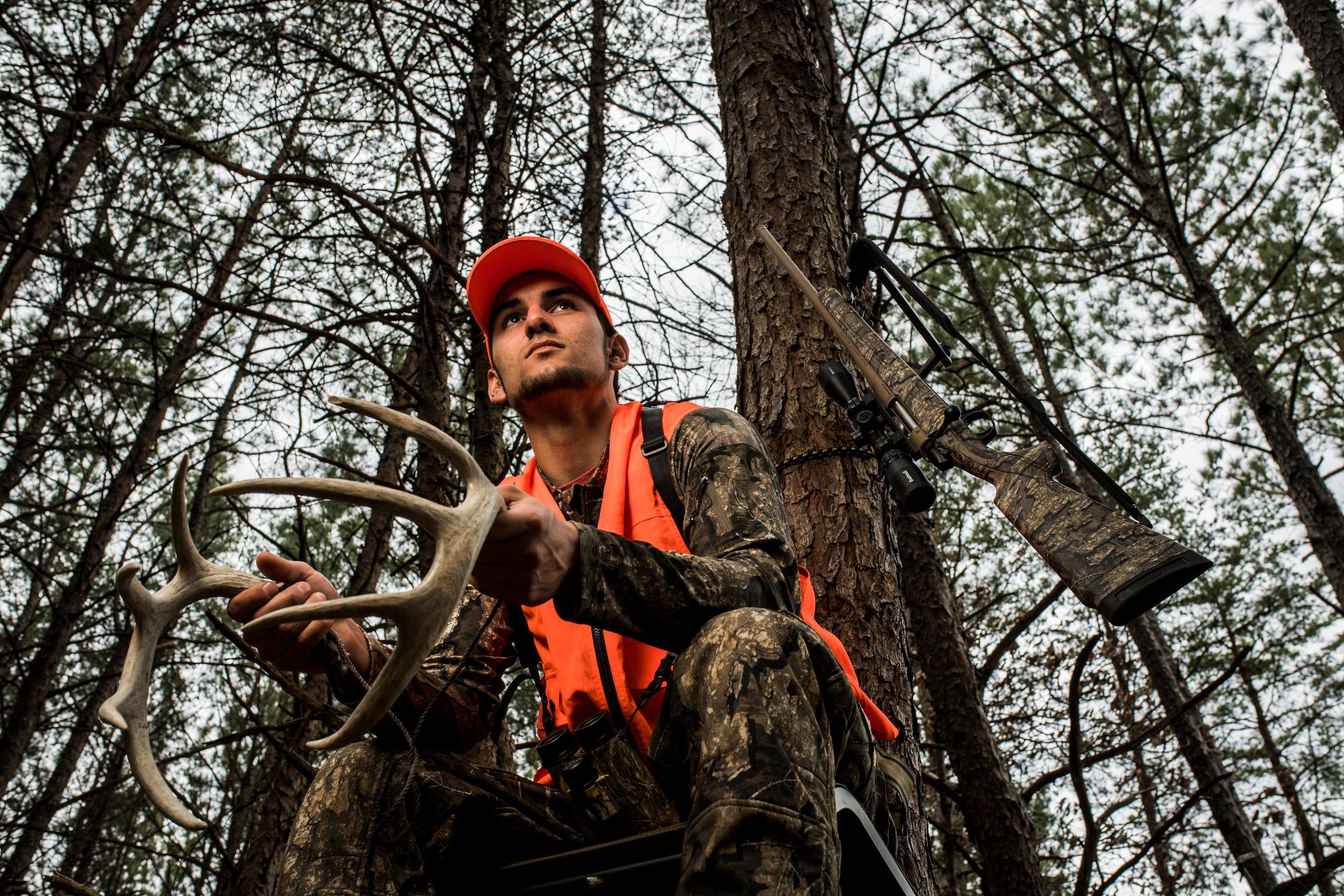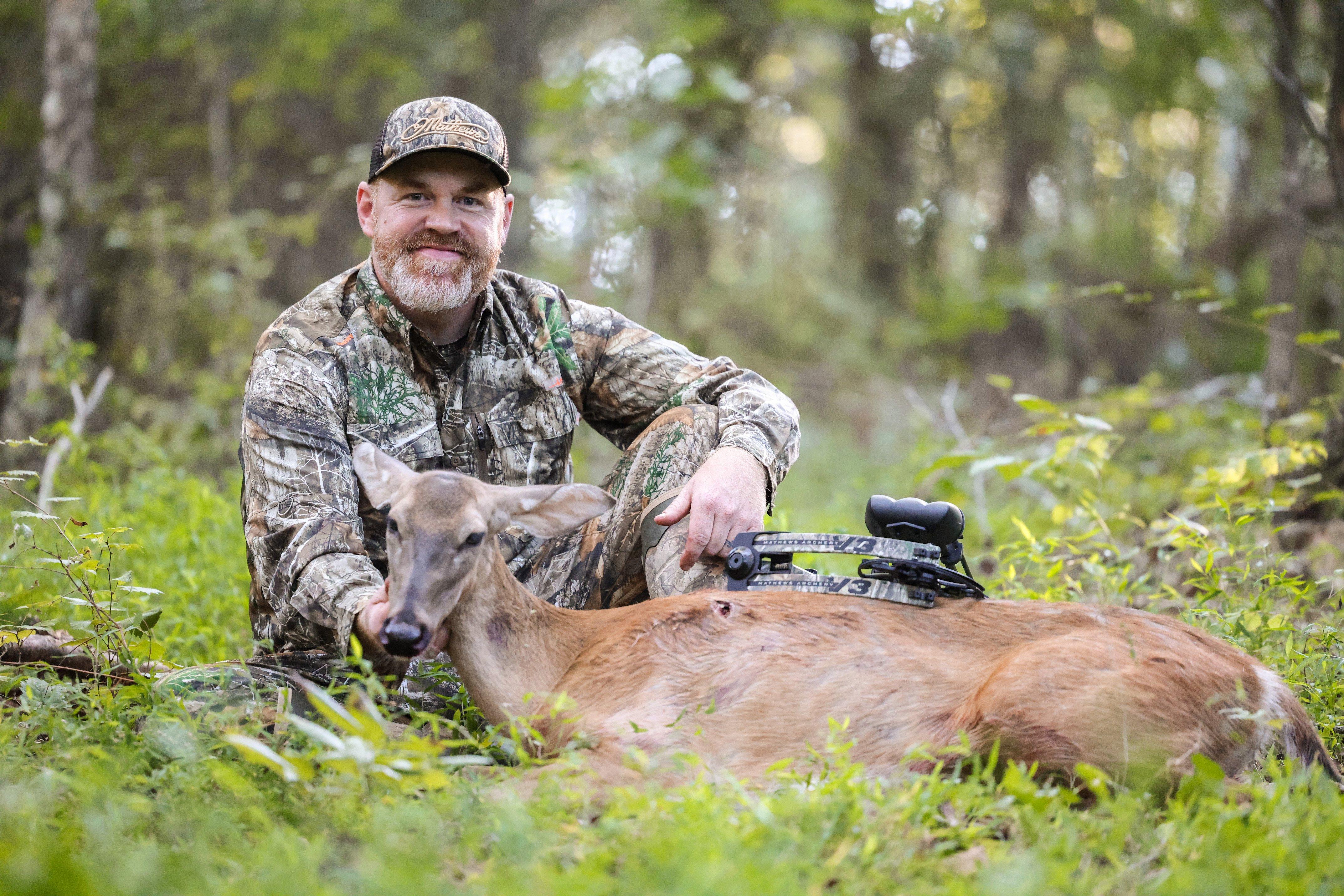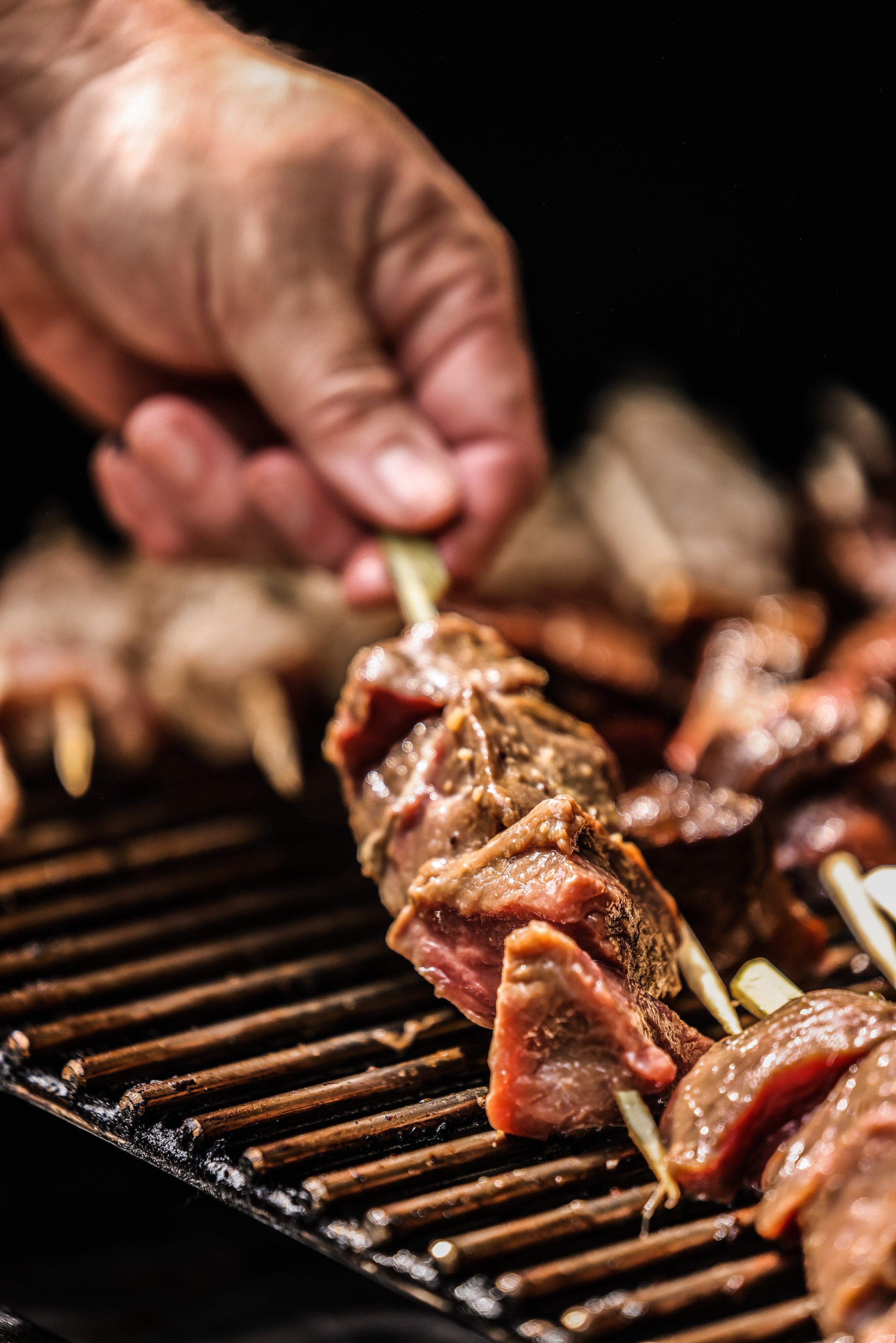Trends for the good, bad, and ugly seen in more than four decades of hunting whitetails across the country
The fat 4-pointer glided in below my perch, young muscles rippling in the morning sun. I pulled the Bear and the aluminum arrow sliced the air. Then that sound — thwack. The buck mule-kicked and bolted. When I heard him crash, I shinnied down the tree, stepped out of the climber's boot straps, over the bottom of the metal platform, and went and got my deer.
It was a fine November day in the early 1980s, back when life and hunting were slower and simpler. That fork-horn was the third deer I'd killed that season with my old wheel-bow from the same climbing stand fixed to the same hickory tree.
A decade earlier a man called Baker had introduced the first climber to the market. It was a crude invention, a one-piece wooden platform bolted into a welded-metal V brace that fitted around the tree, which you hugged tightly as you struggled up 20 feet. Rough, noisy, and sketchy — the platform was notorious for slipping out from under your feet and leaving you bug-eyed and squeezing a tree for dear life — but bowhunters went wild for it.
Throughout the 1980s and '90s, treestand manufacturers such as API, Old Man, and Summit improved their versions of the climbing stand and made them easier and much safer to use. Their popularity exploded even more. In my part of Virginia, at least 90% of the hunters used climbers religiously. A half-hour before sunrise on an October morning on public land, you'd hear a symphony of metal on bark as hunters all around worked their way up into the trees.
The other day I checked the treestand section of a major hunting catalog. I counted some 60 versions of lock-on and tripod stands, a big selection of huge elevated box blinds, and several new saddle contraptions. I found nine climbers for sale.
Curious, until I got to thinking. I have a dozen old climbers stashed in my basement, but I can't recall using one in the last 25 years. Why? Not sure. Perhaps as Boomer hunters have aged, the popularity of the climbing stand, which takes added effort to use, has dwindled.
Here are some other fads that have come and gone during my 40 years in the deer-hunting industry.
The Big Antler Obsession
In the late 1990s, the burgeoning whitetail-management movement got highjacked by a loud and obnoxious group of people thoroughly obsessed with giant antlers. The noble effort of planting food plots and making other land improvements was not enough. You had to grow and then kill 170-inch plus whitetails, or nothing at all. If you grew or, the horror, shot too small of a buck, you were shamed relentlessly.
Now to be clear, there's nothing wrong with celebrating a big buck and amazing antlers. But this craze turned into something different — and something ugly. I wrote for several outdoor magazines back in those days, and one time an editor told me, If you don't put a 180- to 200-incher on the cover, this rag won't sell jack on the newsstand. We put more pictures of 200-inch deer on magazine covers back then than actually existed in the wild.
We put more pictures of 200-inch deer on magazine covers back then than actually existed in the wild.
Television shows drank the Kool-Aid, too. If a TV host didn't kill a ginormous buck every week, he was no good. Back then, I was just starting to hunt on TV. On one episode I shot a 120-inch buck that might have been three years old, but maybe just two. I got 300 nasty letters from whackos spewing things like, What's wrong with you, numbskull? That buck needed another year, probably two or three more. The horn-hungry crowd was out of control.
But sometime around 2004, things began to change for the better. Hunting organizations began to educate folks to the many benefits of deer hunting that have little to do with rack size or score. But more than that, I think the antler maniacs found out that it is a hell of a lot easier said than done to grow and kill 170-inch-plus deer with any consistency. Doesn't matter if you're from Iowa or Indiana or any other hotspot, world-class deer are few and far between.
The trend line held and today, hunters as a whole continue to embrace the true benefits of our passion, rather than obsessing only over the size of a rack. Sure, everybody still hopes to shoot a big buck once in a while, and the stories of those big deer are still worth telling and celebrating. That's why institutions like Realtree's Monster Bucks and Rack Report continue to be so popular. But the days afield with friends and loved ones, the pink-as-salmon sunrises, the bird calls and sweet-and-sour smells of the woods, the bounty of venison on the few days when we are successful … that is what matters.
A few months ago, I shot a 3-year-old, 130-inch (maybe) buck on my TV show and savored the moment. It was not a big deer, but it had been a tough hunt. Most importantly, that buck made me happy. I got 100 emails of attaboy support for doing it right.
The antler obsession of old is gone — good riddance.
(Don't Miss: 7 Great DIY Deer Hunts)
Deer Hunting Competitions
In 2006 a group called the World Hunting Association (WHA) launched with a mission that promised to take hunting to a new level by creating a competitive tour that showcases the sport's finest hunters competing for hundreds of thousands of dollars in prize money. Celebrity hunters were to be turned loose in a 1,200-acre pen with bow or gun to see who could shoot the biggest buck with, I kid you not, a patent-pending, non-fatal tranquilizing technique that will allow for a thrilling tournament experience.
As the WHA was getting rolling, a TV network and producer I was working with at the time came up with the brilliant idea of the Whitetail Challenge. Four hunters, including me if I was so inclined, would go to some ranch somewhere and see who could shoot, and kill, the biggest buck with a sponsor's rifle and bullet.
Those are just two examples of how people have tried to turn deer hunting into a money-making competition over the years. But hunting deer is not a game, and I went on a mission to prove it.
I am proud to say I blogged relentlessly against the now-defunct WHA and its ridiculous deer-darting scheme in major magazines. I was just as proud not to accept a role in the Whitetail Challenge. They did air one forgettable TV episode before the show bombed and was cancelled.
I am happy to report that, by 2008, many top hunting organizations and millions of genuine hunters had joined me in rejecting the idea of making big money and fame off the killing of a buck. The idea of deer-hunting competitions for profit was a short-lived fad that never really got off the ground, thank goodness.
(Don't Miss: How Far is Too Far to Shoot Whitetails with a Bow?)
Marathon Deer Hunting
About 15 years ago, a number of internationally recognized manufacturers of performance-sports gear got into the hunting game. And they made some really good hunting gear. But with that gear came a fitness craze for hunters.
Starting out, it made plenty of sense. Thousands of magazine articles were written on getting and staying in shape. Advertisements of lean, chiseled guys and gals in hunting clothes were everywhere in print and on video.
Then things got carried away. As more and more young, fit hunters became increasingly popular and influential, everyday deer hunters started to feel intimidated. People got to thinking they had to run a marathon or bench 250 in order to hunt and kill a deer. Reality is, you don't need to be an extreme athlete to be successful on whitetails. Some regular cardio, stretching, and light weights two or three days a week will keep you healthy and in fine hunting shape.
There is still a niche of hard-core guys and gals who train religiously to hunt better, mostly for elk and deer out West. I respect them for sure. If you want to be in peak physical shape to sit in a deer stand, more power to you! But for us everyday whitetail hunters, the hoopla of the fitness phase is over.
The COVID Hunting Boom
The Covid Pandemic produced an unexpected interest in deer hunting across the United States as cooped-up people sought to get outside, try something new, and kill and grill their own food. Hunting license sales increased 5% from 2019 to 2020.
The COVID bump dovetailed nicely with the gradual and ongoing increase of locavore hunters over the last decade. Like most of the new COVID hunters, these 30- and 40-somethings love to live semi off the grid, shop at a farmer's market, and grow a vegetable garden. The thought of shooting a deer for the organic meat is appealing.
But a major survey earlier this year showed that in 2021, resident hunting license sales (most of them whitetail permits) were down 4.0% across the nation. More troubling to me, the survey said that first-time hunters, the biggest group of people we need to recruit to increase our ranks, were down 9% last year.
Is the COVID hunting boom over, and will it take the majority of field-to-fork locavore hunters with it? Once COVID is essentially gone and people settle back into their normal routines, will hunter numbers be back to their stale pre-pandemic levels?
Time will tell, but the COVID/locavore bump in hunters is one of the best things I've seen in the last 40 years, one I sure hope does not fade away.
(Don't Miss: 10 More Deer Hunting Myths Debunked)










